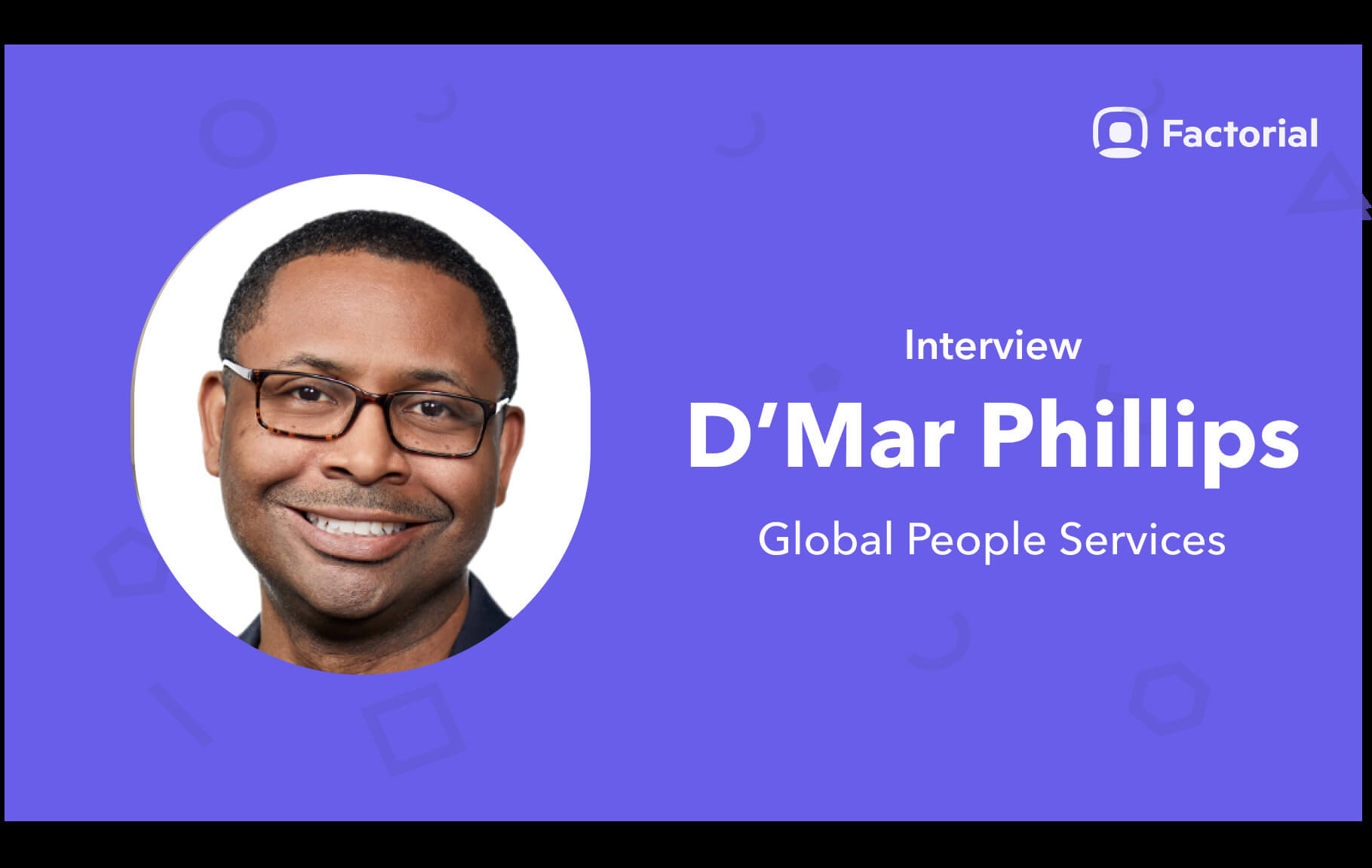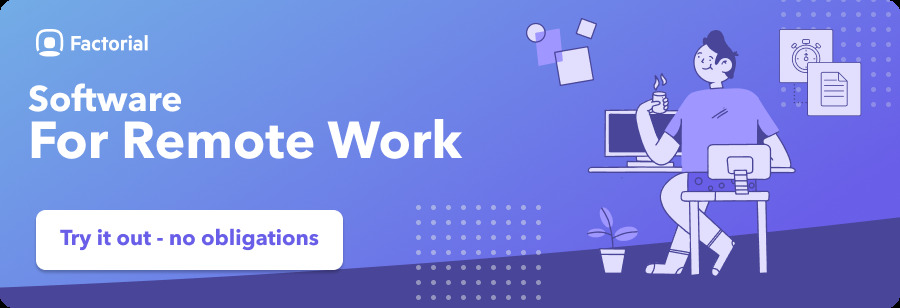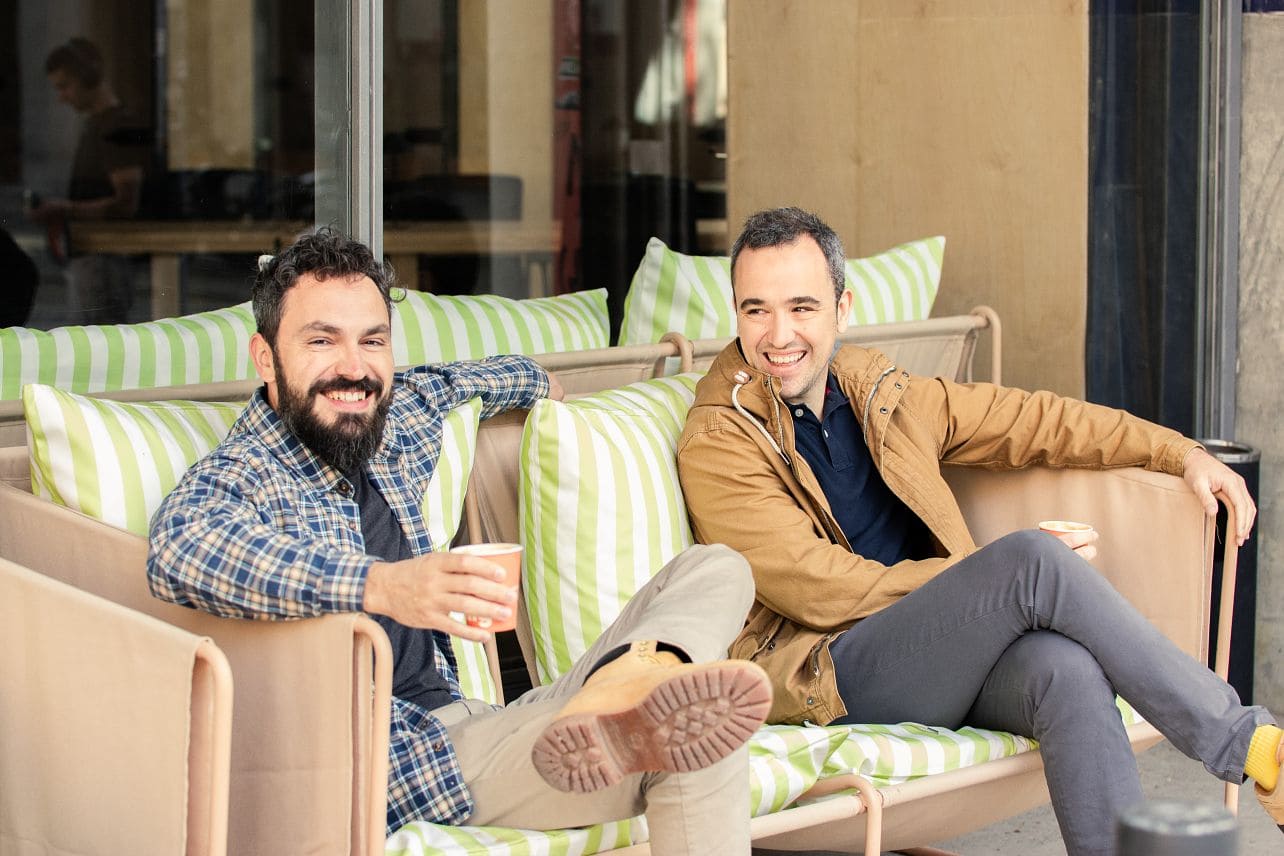What does it mean to be a revolutionary and inspiring leader? We often give Nobel prize winners recognition for these sorts of things, but what about the incredible people who are working towards nurturing, supporting, and growing their teams within a company. Often overlooked most of the time, members of Human Resources are the glue that holds people within the company together. They’re not only the peacekeepers, but they’re also the ‘caregivers’ in a way, making sure each and every employee is taken care of, all the way from recruitment and onboarding, to training, daily management and more! Without a dedicated HR leader to form the backbone of the organization, managing staff and HR processes can be a real struggle.
In today’s HR industry expert interview, we had the opportunity to highlight an exceptional leader by the name of D’Mar Phillips, who is the Vice President of Global People Services for Clarus, a Fort Worth, TX-based company and collaborative workspace pioneer within the glass board industry. Clarus is a relatively young company, with over 200 employees, most of whom are locally based. In 2020, they are celebrating 11 years in operation.
Getting to Know Clarus
Phillips shared with us the story of Clarus and how over the years, they have created the market that they occupy today. As the premiere glass boards company in the world, they have built a multinational presence across the United States and they continue to expand. With a new manufacturing plant in Soignes, Belgium, and global salesforce in the United States, United Kingdom, France, and United Arab Emirate, Clarus is focused on offering glass board products that not only are visually stunning and made from superior materials, but that also protect workers as they screen their employees coming into the office or facility under COVID-19.
In this unique interview, D’Mar Phillips shares with us countless insights into HR, his role as a Global People Services Manager, how his team is adapting to remote work, and valuable insights into the talent management, performance, and compliance processes within their global company.
- Global People Services vs. Human Resources Department
- What it means to be an HR Leader & Change Catalyst
- Adapting to Remote Work in a Global Company
- Building Collaborative Relationships in a Pandemic
- The Changing Face of Talent Management
- The Often Overlooked Yet Crucial Aspects of Managing HR
- Differences in HR Across Various Industries
Global People Services vs. Human Resources Department
“For the context of those who are not familiar. Over the years, the concept of Human Resources has been tainted in the eyes of employees. Many employees feel that they do not have a voice or an ally they can depend on to represent their voice and interests. Areas of concern, such as better work conditions, promotion opportunities, career development, training, and pay concepts. So, upon starting at Clarus, I invested my first 30 days into hearing the voice of our employees through a listening tour where I conducted “People Talk” sessions, small group meetings focused on listening to the concerns of our employees, hearing their experiences in an open, direct manner, and reporting back to them on the progress we make on areas that were actionable.”
New Approaches to Making Human Resources More Accessible
“At first, they (employees) were suspicious of my motive, who I was, my background, and what I had to offer them. I anticipated push back and overall skepticism, so I worked with our CEO, Marc Mansell, and CFO, Peter Delich, to deliver on some quick wins within the organization. To their credit, (Marc & Peter) they were fully supportive and in fact, appreciative of the immediate interest I had placed in getting to know the employees and the initiative I took to quickly make a difference.”
“To make a long story longer, after a few weeks of our ‘listening tour’ and hearing the perception of Human Resources, I decided that changing the name to something more inspirational, aspirational and results-oriented was where I wanted to take the company and my team. So, I approached Marc with my recommended change in name and he loved it. We put together a mini communication plan to notify everyone of our new philosophy, still embracing the traditional work functions of Payroll, Benefits, Compliance, Recruitment, etc.; but a fresh new take on an old subject has led to some amazing things. I presented at our first Board Meeting the vision for GPS and they were fully supportive and onboard. We have not looked back.”
The HR Leader Behind the Inspiring Shift
When asked what his roles and responsibilities were as an HR leader, Phillips answered with a humble response, a clear reflection of his down to earth character and values.
“As for my responsibilities, that is a loaded question. Title and position are sometimes overrated. I believe that the true essence of my responsibilities is to help shape the future of our organization through our workforce and to help ensure the aspects of the workplace are as fruitful as we can possibly be as a company by embracing a company culture that is rich with respect, people, integrity, innovation, excellence and passion. It is truly our mission to fulfill those values and build a growing, profitable company that yields successful people at every turn.
As the Vice President, Global People Services, I think it’s poetic that our company’s mission statement is called “True North Objectives” as GPS is like a roadmap, a compass that helps guide our employees throughout the business, through their career progression and performance overall.”
HR Leader & Change Catalyst
You’ve mentioned in your LinkedIn that you are a Change Catalyst. Can you expand on what this means for you?
“Absolutely, and that is an excellent question. To me, being a catalyst for change is about embracing different ideas, thoughts, and designing a better solution based on what you know or discover. A “Change Catalyst” seeks to find ways of continuous improvement in any environment and helps to reconcile the gaps between what currently exists and what can be. A realistic dreamer, visionary, and believer in the best of us is still yet to come.”
“I look at my role within the GPS (HR) function around talent or performance management, and historically most organizations accept the status quo of everyone receiving an evaluation. For example, each person is measured on these 5 things and 3 objectives, and it is an across the board merit increase roughly 2.5% to 3%. That may work for a first-year strategy taking a company from nothing in existence to measure talent to something nominal to measure talent; but is it truly what the organization and the employees need?”
Pivoting, Re-evaluating, and Questioning Actions
“Have the courage to reexamine what you have put into place. Did it work? Did the employees truly perform better or did the supervisor just select a rating because they liked the employee’s work ethic, personality, but not their result? We lose track of performance at times because of personalities, the likability factor, and yet not hold people accountable based on poor results because of it. We excuse it because it is easier to get along or go along and keep the employee happy instead of confronting the performance aspects of their roles and challenging them respectfully to do better.”
“As human resource professionals, we must question everything and never become satisfied, even at our last best work. We must forge ahead with change management techniques, rallying around the idea of breaking things that are not broken to fix them for the next ten years, even if they would work fine for the next two. I guess I like to fix things and solve problems that everyone else finds difficult or afraid to tackle. It is just my nature; and it has served me well over my career.”
Adapting to Remote Work in a Global Company
Much like many companies in the USA, in March 2020, they were taken by storm at news of the ‘shelter in place’ order, which forced workers to quickly adapt to working remotely. We were curious to know how the team at Clarus was adapting.
How has the shift been towards remote working for you and your employees?
“I am so proud of the adaptability and flexibility that our team has demonstrated. We modified our behaviors virtually overnight and took positions that were traditionally office-based and moved them to fully functioning at home without skipping a beat. Corporate and Sales roles largely went to the work from home policy on day 1; others followed suit shortly thereafter”
“Our Operations personnel with functional roles that allowed them to work from home were also a part of this shift. We have modified schedules for being in the office, some are working from home. Any employee who has access to work from home based on their function, whether a corporate role or operations role, has largely been able to do that. We have adjusted our thought processes and reimagined what work from home policies mean; and thus, we have protected more people by reducing a good number from within the office to allow social distancing processes to happen naturally by function within the building.”
On a management level, have you adjusted the way you manage your employees?
“As an HR leadership team, we have had to adjust our thinking over the course of the last few weeks to deliver the sales and financial objectives we have for our shareholders while protecting the rights of our employees to manage their health and wellbeing. That has been a delicate balance. Between employees who are afraid of coming into the office due to COVID-19, or shelter in place orders issued by different counties, the ability to earn a living while protecting ourselves and each other has been challenging. Fortunately for Clarus, we are an essential business so remaining open to deliver products to the Veterans Administration and hospitals during this pandemic has provided us with a sense of pride and purpose that some companies will never experience.”
What are some of the main changes you’ve needed to make to your processes as a result of the COVID-19 Pandemic?
“Protecting our people is our number 1 priority. This pandemic has put into perspective the ideals we hold as a company and the importance of living those ideals each day. For example, we have repurposed products that we previously sold for use internally because they were better functioning tools than what anyone else had available. Thus, we become our own customers in a sense.”
“We have embraced an aggressive cleaning regimen within our plant with janitorial services staff and maintenance staff working day and night to keep the building wiped clean. We scan our employee’s temperature before they clock in, provide each employee a wristband to notify others that at the time they reported to work they did not present with a fever; and provide surgical masks daily. In addition, we added a Parks Pantry within the Operations breakroom to support meals so our folks would not have to leave the plant during lunchtime to get food.”
Do you think that these new processes will become a part of the way you work in the future?
“We are changing as a company and learning about each other throughout the process. We will continue with some parts of the procedures we have embraced after the risks have been mitigated. Many of the things we have mentioned above, such as the temperature checks, masks to guard against the spread of viruses, aggressive cleaning schedules, and social distancing are all processes that did not exist prior to COVID-19 but may continue even after this has subsided. Who would have thought that hand sanitizer would be seen as a true commodity until it was scarce; and now everyone uses it as part of our safety procedures”
“What has been interesting to watch is the amount of peer pressure our employees place on each other to ensure they are safe. One example is an employee who reported to work feeling sick at the beginning of this pandemic; and I was notified within minutes to decide what to do with him and how to respond. We were fortunate that the employee was not diagnosed with COVID-19 and was able to return to work with doctor’s approval within 3 days of being seen, but the level of peer pressure that occurred would never have happened in the past. Employees typically let others determine their own health and if they can work or not.”
“For the record, yes, we did ask the employee to go home for the time being, seek consultation from MD Live, our Teladoc service until they could get with their primary care physician – and follow up with one of the drive-thru clinics if it were recommended. He is doing fine today and reported back to work within three days with no positive test for COVID-19.“
Building Collaborative Relationships in a Pandemic
One of the main struggles for employees and HR admins during the pandemic has been how to build highly collaborative working relationships across the organization. Phillips shared with us that the key to being successful with this was all about communication.
“To collaborate means there is some level of synergy that occurred and an understanding of the minds that this action, process or thing we are creating is worth investing time, energy and more importantly the company’s resources to produce it. We have a wonderful example of collaboration in the age of COVID-19, with the TherMobile product and subsequent launch. The advertisement is on LinkedIn for review.”
Collaboration in Crisis
“As part of our efforts to protect our employee base, we scan temperatures of each employee coming into the building each day and provide a wristband to denote they have been scanned and are not presenting with a fever. Our HR leadership team, including the VP of Global Manufacturing & Supply Chain, Glen Huey, and myself, brainstormed an idea to create a barrier between us and the “virus” potentially – a screen. We procured the digital infrared thermometers and all we needed was the barrier. So, being creative geniuses, Operations leaders went to work and fashioned the prototype for the TherMobile. They took the design to our VP of Product Design, Dony Dawson, and he created the window to scan the employee through. But that was not enough.”
“We took pictures of the original and sent it around to our leadership team, and within twenty-four hours, the new design had been created and a product name was launched with the patent in progress all before the first employee was scanned. When it went into production, we marveled that the whole process took less than one week from inception, to design, to creation, to marketing, to launch, and sales orders – completed! An amazing testament to trust, the speed of which is critically important, especially in a pandemic.”
The Changing Face of Talent Management
Has the current situation changed the way your company networks and/or recruits?
“We have changed how we interview candidates, relying on Zoom and personal referrals more than traditional recruiting. Our Director, Talent Acquisition and Management, Nicki Lammons, has done a fantastic job of keeping her team engaged with recruiting efforts and we have been successful. We have filled each open role that was not placed on hold during this period of a pandemic; and we are poised to pick up where we left off once the doors truly open again.”
How are the changes in recruitment shifting the way employers will recruit moving forward?
“I must admit, I like and prefer the traditional methods of recruiting, especially the in-person interviewing part. But I think green interviews are going to become more prevalent, at least in how Clarus operates, and we will adapt to this ‘new normal’ leading into our recruitment season for some time to come.”
The Often Overlooked Yet Crucial Aspects of Managing HR
Let’s talk about performance management and the importance of running regular performance reviews.
Do you use specific performance management tools?
“Currently Paycom is our People system that supports our performance management and planning tools. I like tools like the 9 Box Grid, Individual Development Plans, SMART Goal Worksheets, and one on one meetings. These are traditional methods of evaluating talent and planning for success; and they still hold value within most organizations. I am open to exploring other, more robust programs, but what works for us most is setting goals, cascading them down throughout the organization and measuring everything we have assigned to our teams against those goals.”
How often and for which reasons do you conduct performance reviews?
“We have an annual review process currently. But whether it is a formal or informal process, the evaluation of our talent occurs every day. I consider it the “what have you done for me lately” syndrome that all companies face. And, while we do not need to create bumper stickers, we are all working to ensure that we deliver the best product, service, and experience for our customer. Our customers vote with their wallets, expense budgets, and time how well we do our jobs.”
How do these reviews help you build better teams?
“The main benefit to any evaluation program is that it promotes communication between the supervisor and their folks, and should be done as often as possible to ensure they are tracking the right goals and measuring the right things. As managers and HR leaders develop a rapport with their people, forge better understandings of what their current performance level is and what needs to be changed, it is better for the team, the department, and the organization. If it is better for each of those areas, then it should also be better for the customer and deliver better service, support, and products.”
Now, what about Compliance? In your opinion, what’s the number 1 compliance issue HR managers face in your industry?
“Within glass manufacturing, my guess would be injuries due to the products themselves and improper usage of personal protective equipment (PPE). Due to the heaviness of the products, the safety risks of injuries from steel or glass, if you have an improperly trained workforce, then bending, lifting, cutting, strains, pains, etc. may occur.”
“We have a robust training program and our Environmental Health & Safety Manager, Krista Robinson, has done a fantastic job of preparing them, teaching them about proper techniques, and documenting the appropriate measures to keep them safe. It is a first-class program for sure.”
Differences in HR Across Various Industries
We were interested to ask D’Mar Phillips whether he noticed any main differences in HR across the various industries he’s worked in. As an example, how certain industries managed compliance issues or payroll incidents. His response was incredibly insightful.
“Yes. The focus shifts with each organization and what is important in one may not rank high on the list of priorities of another. Within each organization that I have worked, I have learned something about it, from automotive to powersports, from manufacturing to retail and glass boards. Each organization has a way of focusing on the DNA of the brand and each company is uniquely suited for that industry. Some organizations focus on their culture, driving a wedge between them and the outside world, ‘us vs. them” mentality and it is a march to compliance while working there. High tribal knowledge within those organizations, longer tenure, and a flat organizational structure are typical signs in those companies.”
“I like the challenge of helping to shape a younger organization, helping instill the meaning of the company’s culture we seek to deliver and earn the respect of the workforce by supporting their goals, aspirations and dreams. I could not be happier at Clarus, a truly amazing organization with a people-first mentality, that is focusing on our customers one glass board, collaborative work product at a time.”
For more information on Clarus and their full range of products, from the latest be! Mobile, to TherMobile, you can visit their website – www.clarus.com. And if you are interested in purchasing an amazing addition to your office or home, let them know D’Mar referred you!
Interviewee: D’Mar Phillips
Recorded & Edited by: Tanya Lesiuk









